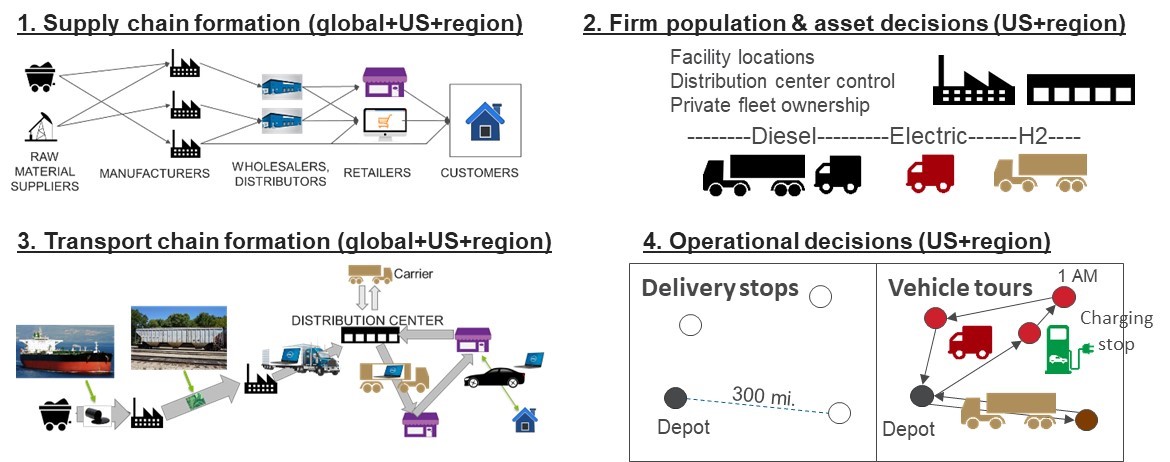Freight Modeling
Model the movement of goods and trucks at the transportation system level with POLARIS.
Medium- and heavy-duty vehicles currently account for 21 percent of greenhouse gas (GHG) emissions in the United States, a percentage anticipated to increase in the future. To quantify the impact of advanced technologies at the system level (e.g., metropolitan area, state, etc.), Argonne National Laboratory has developed a predictive, agent-based freight model framework that captures trade and transport decisions. The collaborative, informed, strategic trade agents with logistics model is a high-fidelity representation of fleet decisions, fleet operations, and end-to-end shipment and vehicle movements.
Based on extensive data sets, the framework represents the supply chain (from raw material suppliers to customers), firms characteristics (e.g., facility locations, vehicle fleet, etc.), how goods are moved, and the overall impact on operations (e.g., refueling, charging, docking, etc.).
POLARIS allows the simulation of all passenger and commercial trips over a 24-hour period. Autonomie, Argonne’s state-of-the-art vehicle energy consumption, performance, and cost system simulation tool, and SVTrip, which generates naturalistic vehicle speed profiles following training on large, recorded driving data sets, can then used to estimate the energy impact and greenhouse gases, regulated emissions, and energy use in transportation (GREET) on overall GHG emissions.
 Agent-Based Freight Model Framework
Agent-Based Freight Model Framework